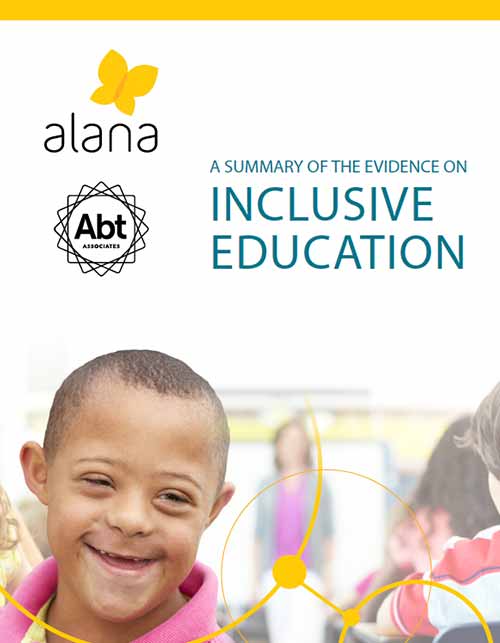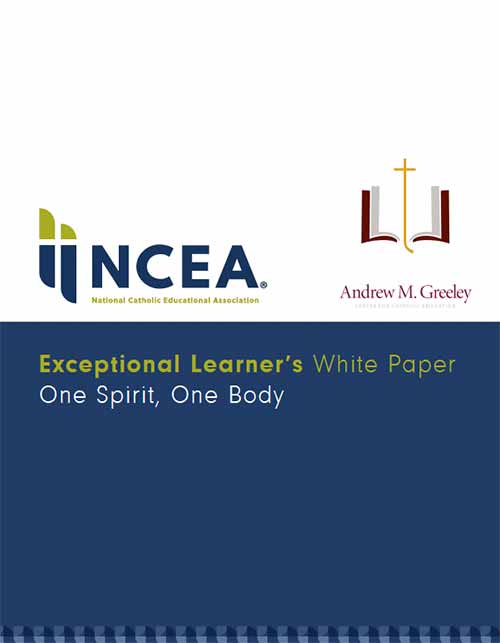Inclusive Catholic Education Inclusion
Inclusive Catholic Education Inclusion is an approach in which all children, regardless of ability, learn together in the same school. Special support is available to ensure optimal learning for students with special learning needs. FIRE makes grants to partner schools, providing partial funding for special education resources and staffing. Students with special needs achieve their individual academic objectives while learning alongside their peers. Contact us for more information on Inclusive Catholic Education within the boundaries of the Diocese of Kansas City-St. Joseph.
Benefits of Inclusion for Students With Disabilities
The benefits of inclusive education are numerous for both students with and without special needs. Inclusion also gives Catholic learning communities a unique opportunity to live our faith by modeling Christ’s love for others.
- Friendships
- Increased social initiations, relationships and networks
- Peer role models for academic, social and behavior skills
- Increased achievement of academic goals
- Increased opportunities to grow spiritually
- Opportunities to participate in sacramental development
- Greater access to general curriculum
- Enhanced skill acquisition and generalization
- Increased inclusion in future environments
- Greater opportunities for social interactions
- Higher expectations
- Increased school-staff-family collaboration
- Increased parent participation
- Families are more integrated into community
Benefits of Inclusion for Typical Students (without significant special needs)
- Meaningful friendships
- Increased appreciation and acceptance of individual differences
- Increased understanding and acceptance of diversity
- Respect for all people
- Opportunities to live the Catholic faith
- Prepares all students for adult life in an inclusive society
- Opportunities to master activities by practicing and teaching others
- Greater academic outcomes
- All students needs are better met when there are greater resources for all
Read more about inclusive education
- It’s time to end segregation of special education students, professors say ~ University of Kansas
- Building Inclusive Schools for Children of All Abilities, Nicole Eredics – June 12, 2015
- National Catholic Board on Full Inclusion
- More Catholic schools welcoming special needs students, Katie Scott, The Catholic Herald, January 28, 2016
- A Summary of the Evidence on Inclusive Education, Dr. Thomas Hehir, Silvana & Christopher Pasucci
Research

A Summary of the Evidence on Inclusive Education
Dr. Thomas Hehir, Silvana & Christopher Pasucci

Exceptional Learner’s White Paper One Spirit, One Body
Michael J. Boyle, Ph.D. & Pamela R. Bernards, Ed.D.
Best Practices
Essential Best Practices in Inclusive Schools
Please note that the term student(s) refers to a student with special needs.
- The inherent value, dignity and competence of students should always be respected.
- Students are welcomed members of their school, with access to the full range of learning experiences and environments as anyone else.
- Curriculum and related supports are designed to enable students to participate fully and make progress within the general education classroom, learning within typical routines of the school.
- Necessary supports enhance both academic and social participation.
- Any student testing and assessment is performed in their natural context and setting, with the focus on the student’s personal best, their strengths, and progress.
- Families and schools form an equitable partnership to create a quality inclusive educational experience.
- General and special education teachers as well as paraprofessionals and other support staff demonstrate shared responsibility for the student’s education.
- Friendships and social relationships are a parallel goal of inclusive education.
- As appropriate, students are provided with opportunities and the related supports to develop skills such as choice making, problem solving, decision making, and self advocacy.
Additional Key Indicators
- Curriculum is presented in a variety of formats (video, pictures, actual objects, demonstrations, electronically, small groups, at the board, etc.)
- Peer supports should be reciprocal: students should have the opportunity to provide support to others as well as receive it.
- Inclusive education thrives within a school-wide positive behavior philosophy rather than a punitive one.
- Family priorities are considered in annual goals.
- School personnel are invested in the connection between social relationships and student learning and use intentional strategies to promote friendships.
- Opportunities for making authentic and real choices are infused throughout a student’s day.
- Predictions that students will “never” acquire certain knowledge or skills are simply not allowed.
- Students’ names are on all class lists, group lists, and job lists.
Content is extracted from “Essential Best Practices in Inclusive Schools” published July 2012 by Cheryl M. Jorgensen, Michael McSheehan, Mary Schuh, and Rae M. Sonnenmeier